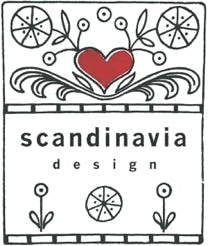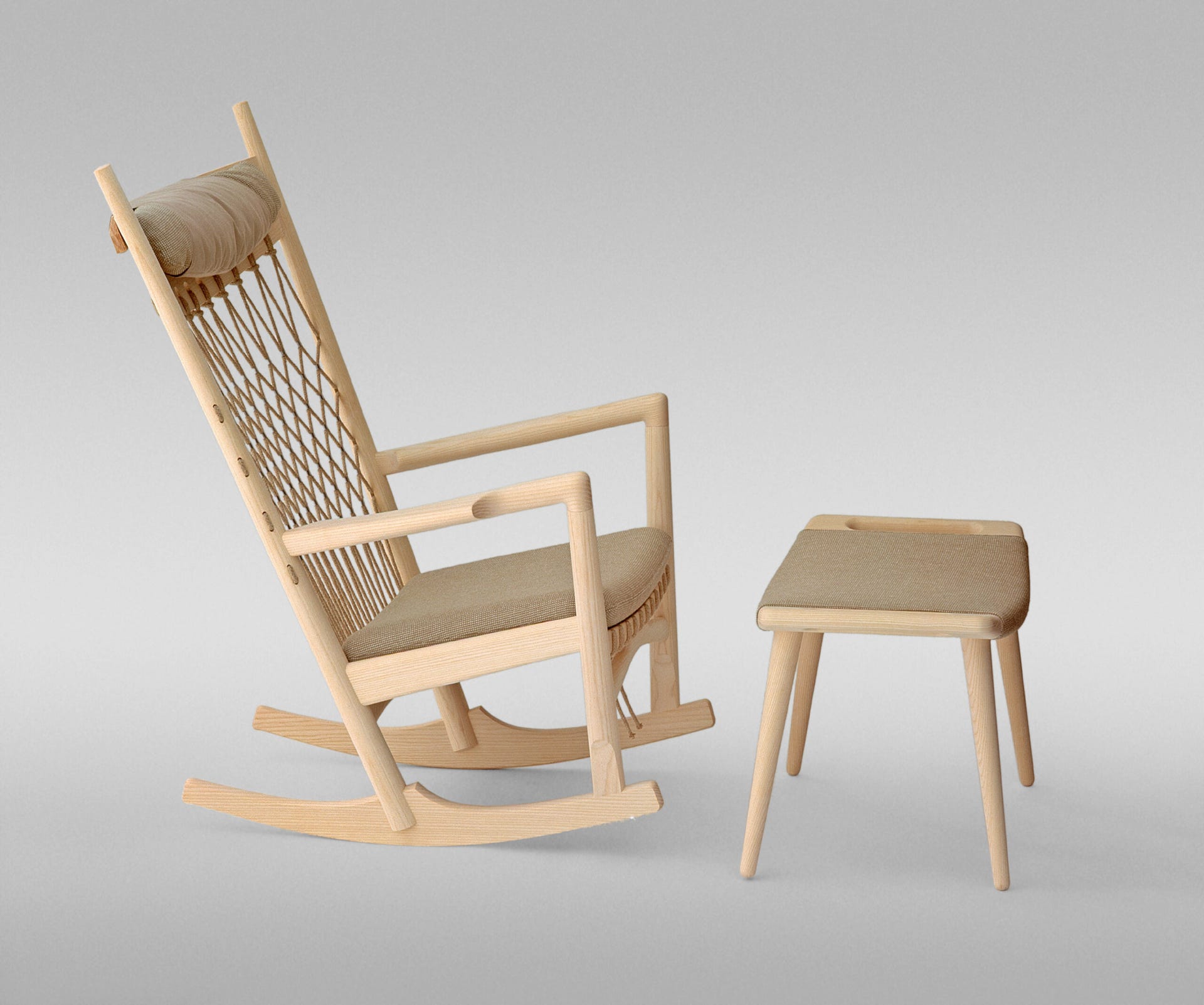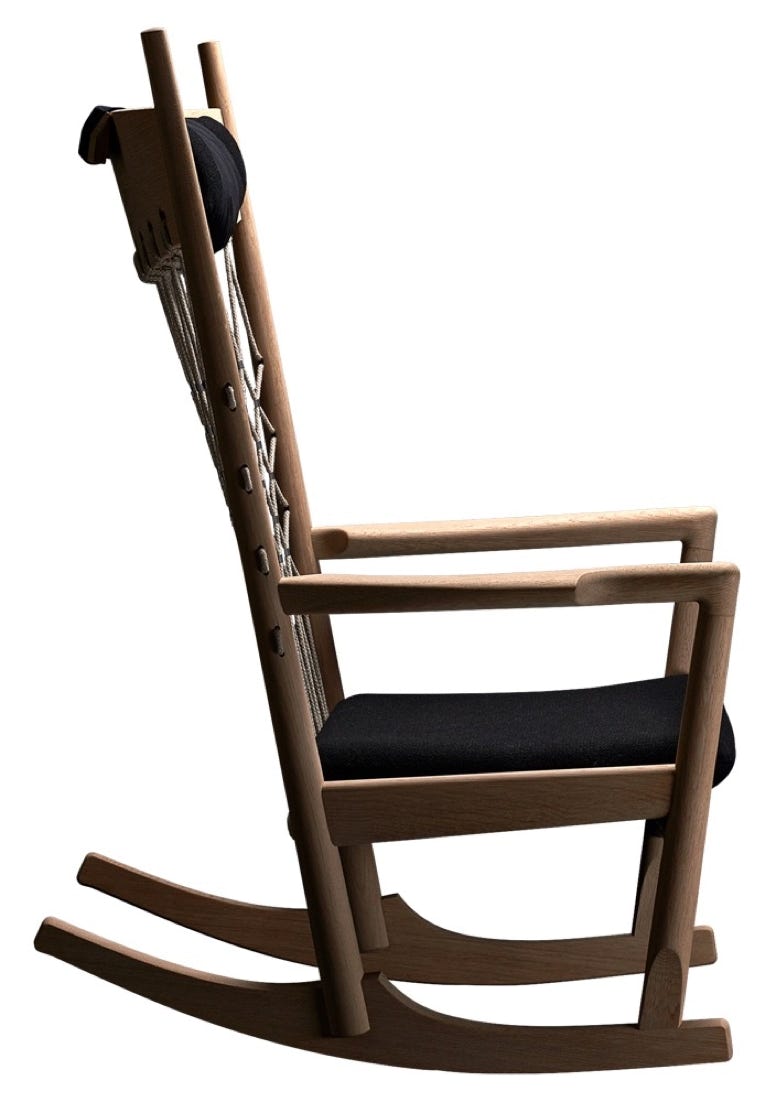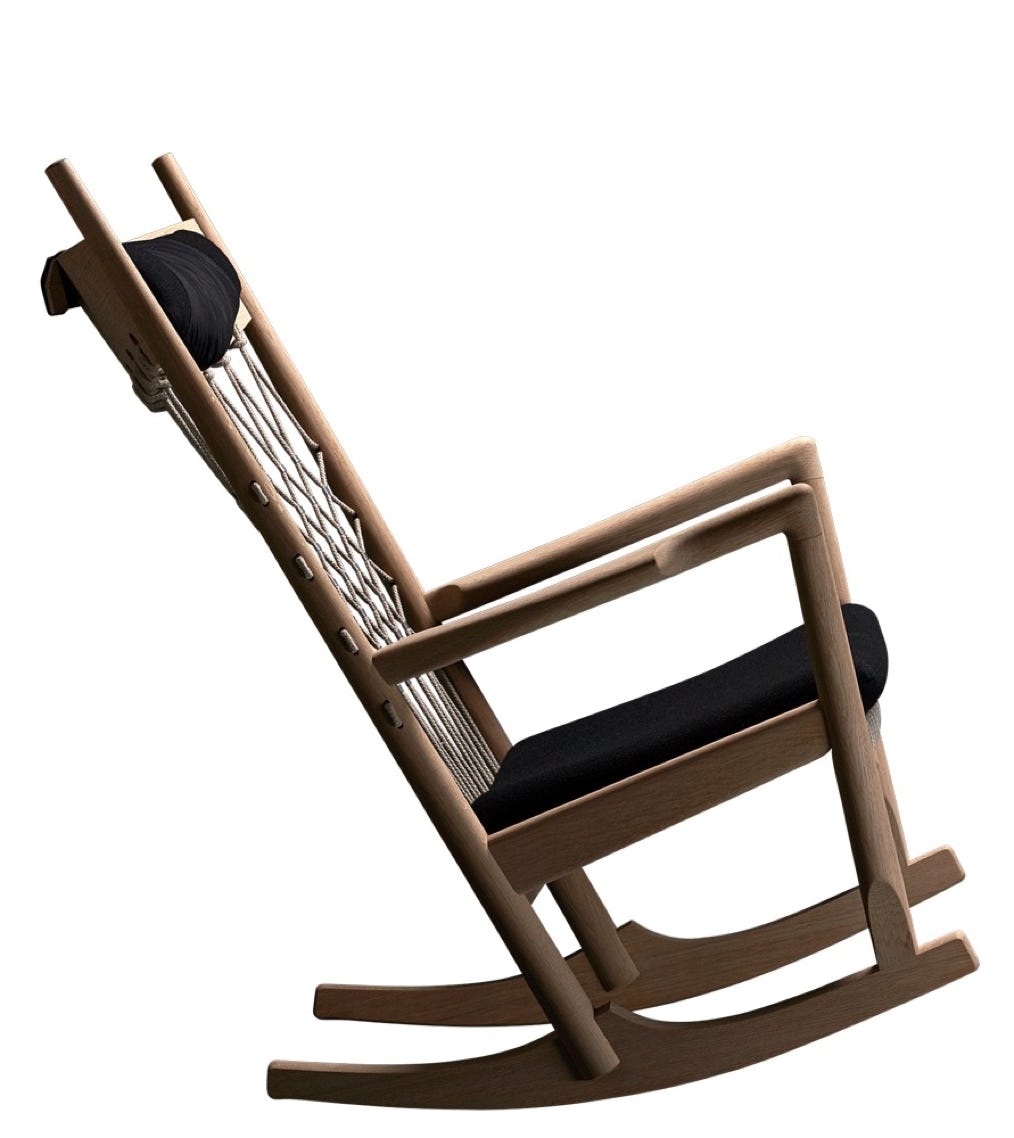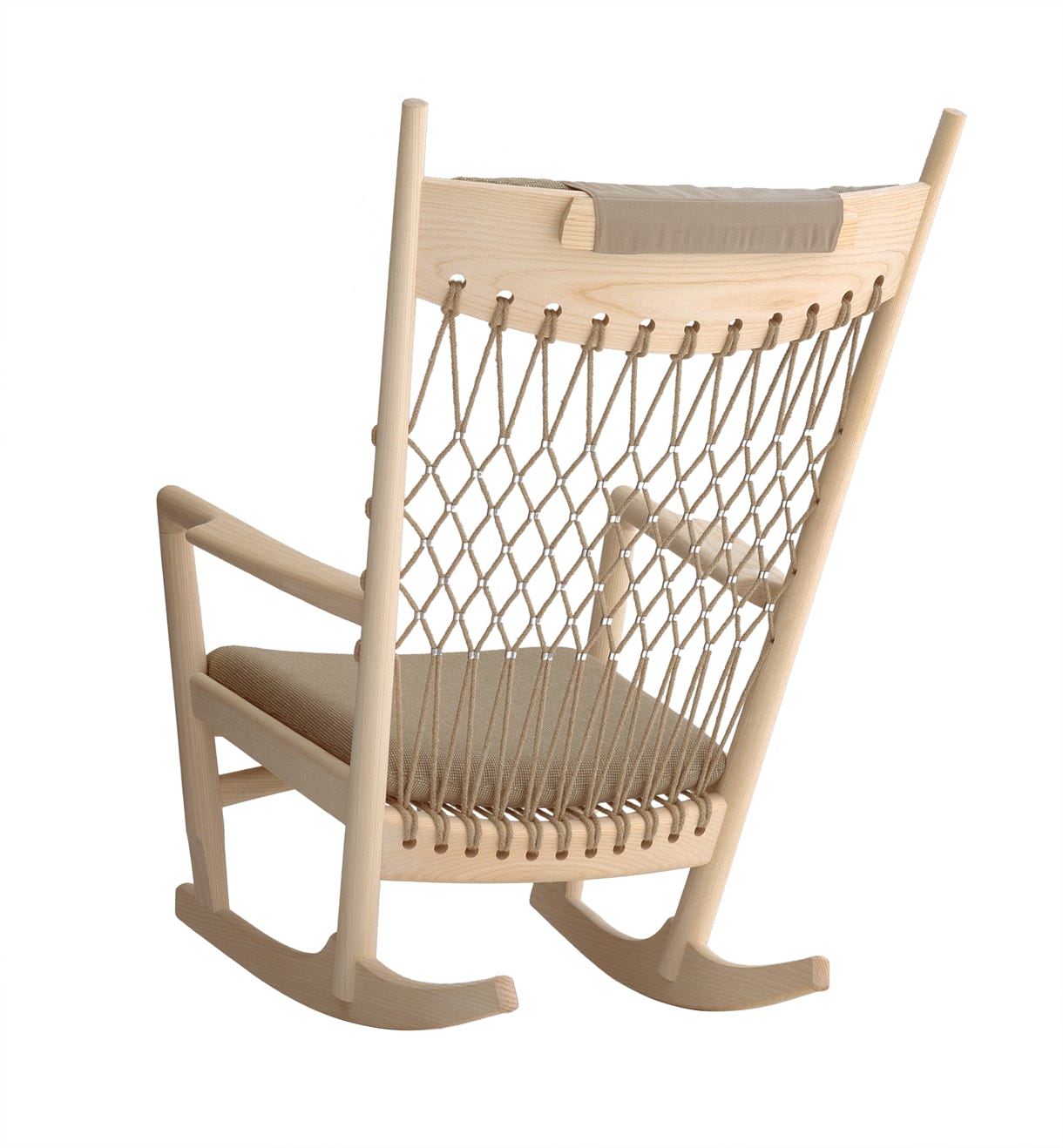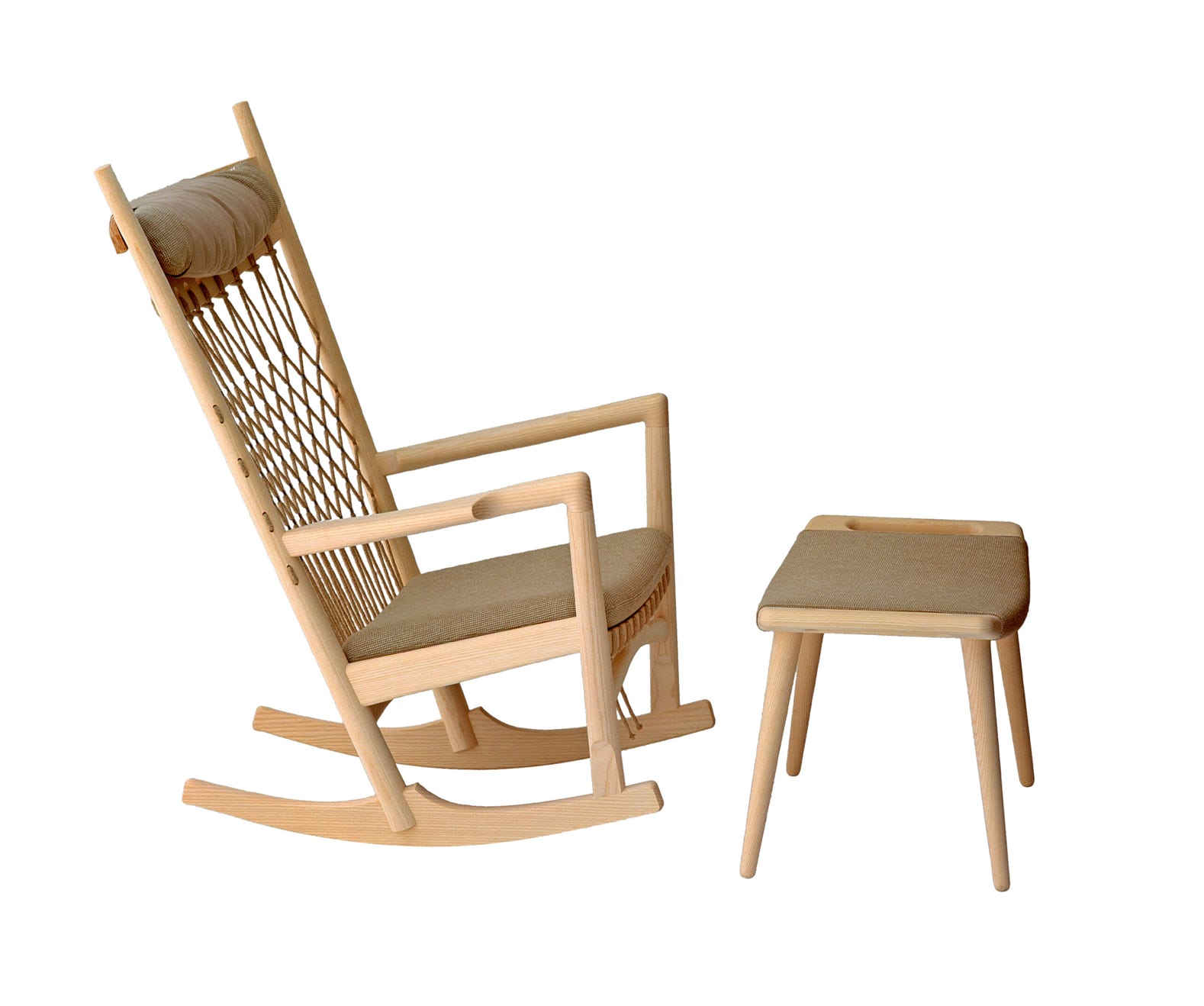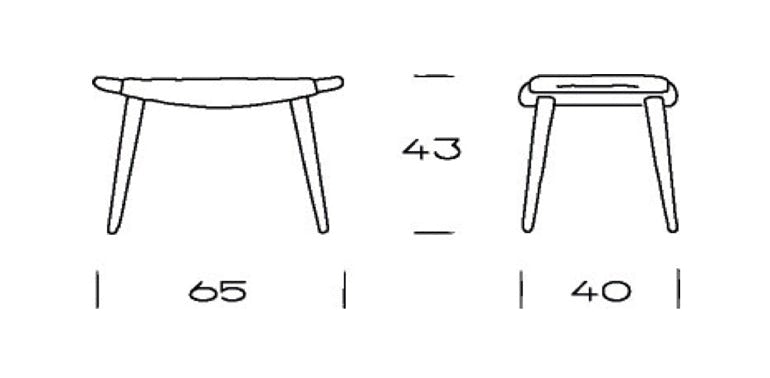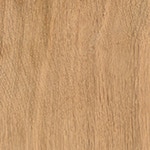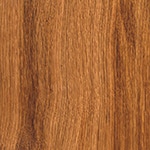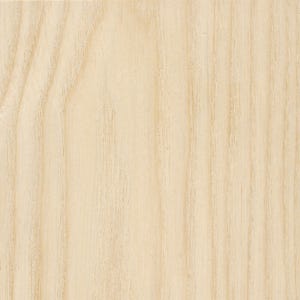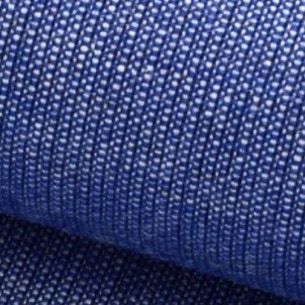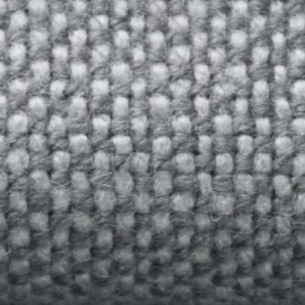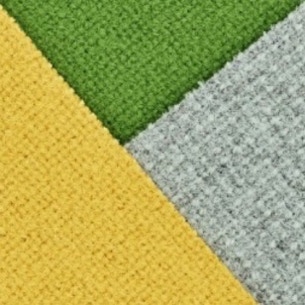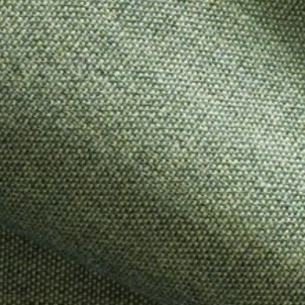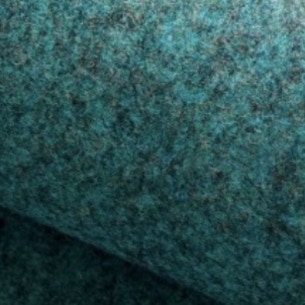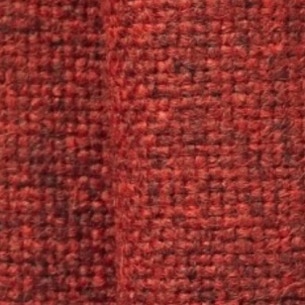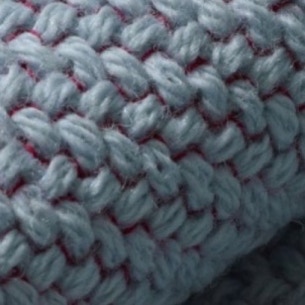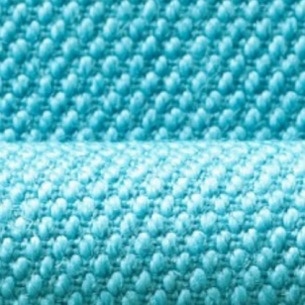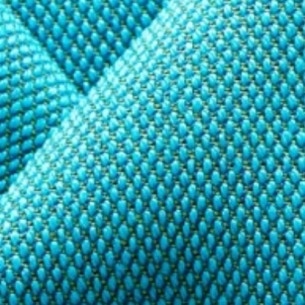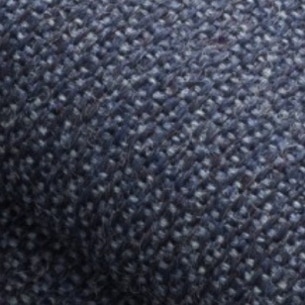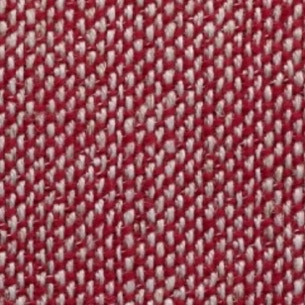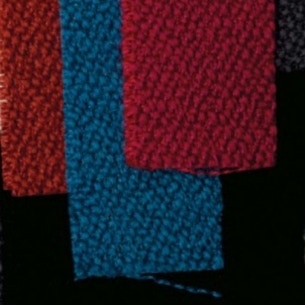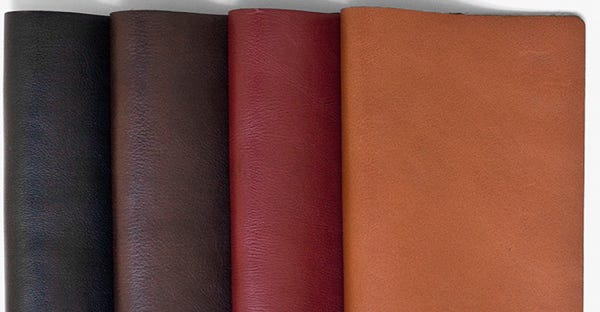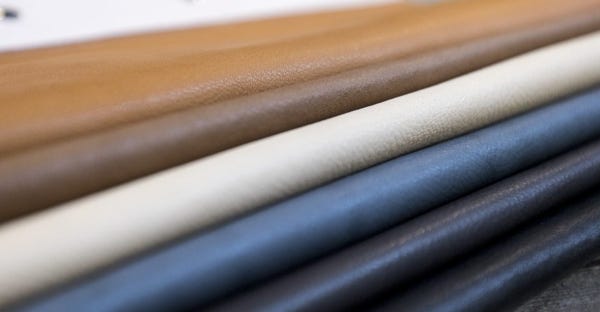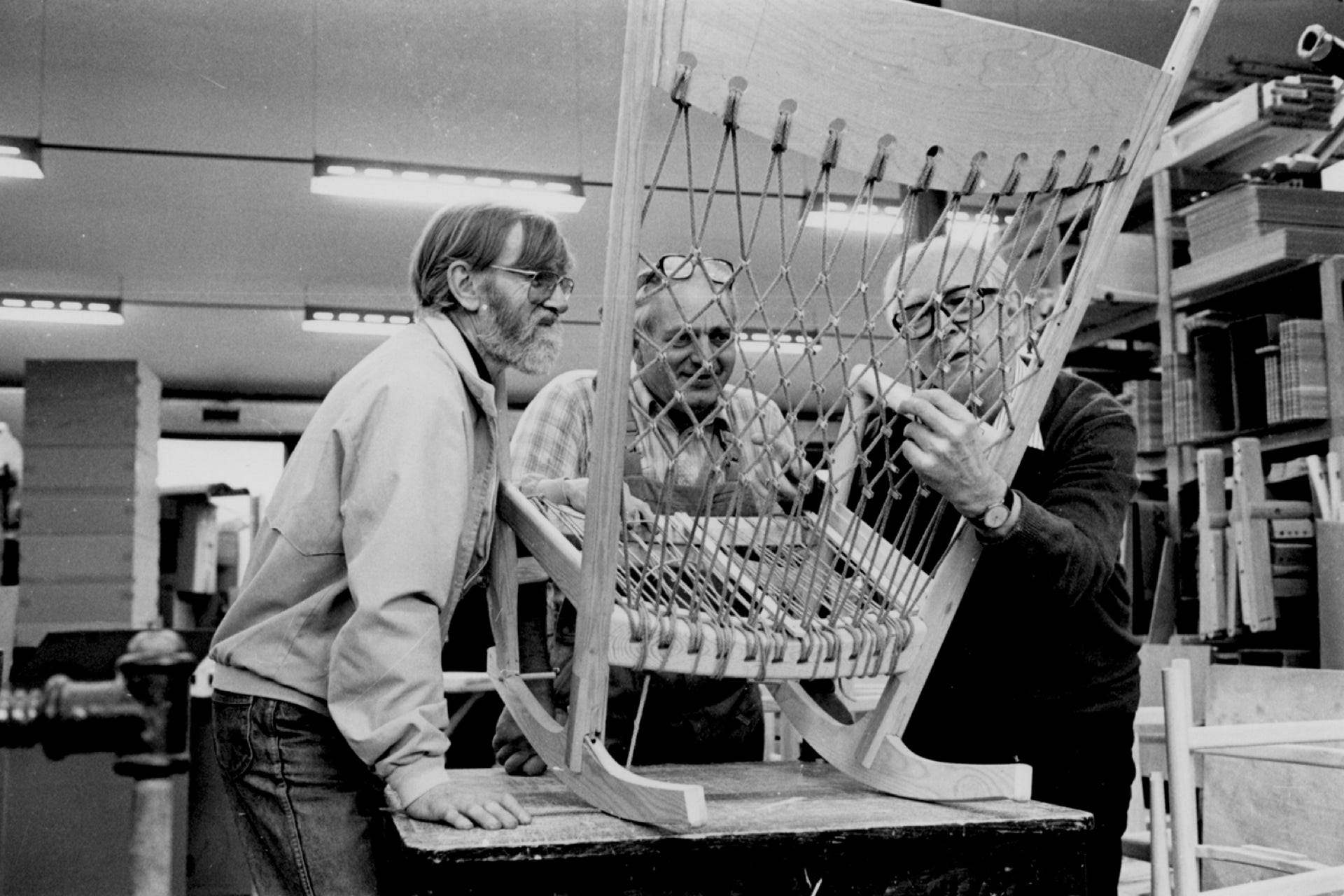The rocking chair was a common piece of furniture in traditional American Shaker furniture and culture – a Christian community founded in the mid-18th century in a minimalist style that had a significant impact on American and European furniture. The pp124 rocking chair bears witness to this influence.
With the pp124, Wegner has created a sophisticated and comfortable rocking chair, with particular attention to craftsmanship and functionality. As simple as it sounds, making a rocking chair that works well is a science in itself, as each position in the rocking motion must be perfectly balanced. The construction should be carefully measured and also particularly strong to withstand repeated movement.
Hans Wegner added a decorative element to this with the string pattern of the backrest which offers flexibility and comfort while maintaining a light appearance. Despite its traditional and stripped-down concept, the pp124 armchair offers abundant refinement and solutions thought out down to the smallest detail.
Wood Ash or oak
Cord The flag halyard is available in plain or black. It is made from jute and has a high tenacity nylon core for optimum strength covered with a protective woven jute sheath. In order to optimize rigidity, the flag line is stretched before being applied to the chair. The clips connecting the flag halyard are available in stainless steel, brass or black.
Cushions Fabric or leather
